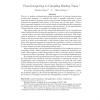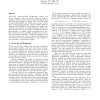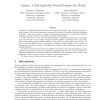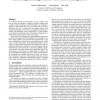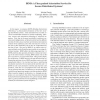41 search results - page 1 / 9 » From Interpreting to Compiling Binding Times |
ESOP
1990
Springer
13 years 8 months ago
1990
Springer
The key to realistic self-applicable partial evaluation is to analyze binding times in the source program, i.e., whether the result of partially evaluating a source expression is ...
PEPM
1994
ACM
13 years 8 months ago
1994
ACM
First-order projection-based binding-time analysis has proven genuinely useful in partial evaluation Lau91a, Lau91c]. There have been three notable generalisations of projection-b...
LOPSTR
1992
Springer
13 years 8 months ago
1992
Springer
We present a self-applicable partial evaluator for a large subset of full Prolog. The partial evaluator, called Logimix, is the result of applying our experience from partial eval...
AOSD
2008
ACM
13 years 6 months ago
2008
ACM
In a software product line, the binding time of a feature is the time at which one decides to include or exclude a feature from a product. Typical binding site implementations are...
SP
2005
IEEE
13 years 10 months ago
2005
IEEE
In this paper, we propose BIND (Binding Instructions aNd Data),1 a fine-grained attestation service for securing distributed systems. Code attestation has recently received consi...
